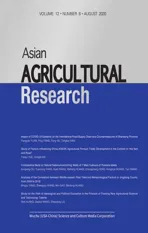Effects of Different Propagation Materials and Cultivation Years on the Yield of Polygonatum odoratum under the Forest
2020-09-28YunweiLIUHongxueWANGShangDONG
Yunwei LIU, Hongxue WANG, Shang DONG
Yichun Branch of Heilongjiang Academy of Forestry Sciences, Yichun 153000, China
Abstract This paper mainly studies the effects of different propagation materials and cultivation years on the yield of Polygonatum odoratum under the forest. In this study, the cultivation experiment of P. odoratum was carried out by using the stem tip, stem body and seeds of P. odoratum as propagation materials. The yield of P. odoratum in different cultivation years with propagation by rhizome was also investigated. That is, the continuous growth of P. odoratum and the yield of P. odoratum each year after cultivation was statistically analyzed. The results showed that the germination rate under stem tip cultivation was fast, and the emergence time was also fast, which was more than 2 weeks earlier than that under stem body cultivation, and the seedling emergence rate reached 100%. The stem body was a new plant formed by sprouting from the buds of internodes, and the emergence rate was more than 95%. P. odoratum propagated by rhizome was harvested in the third or fourth year after cultivation, and the third year was the best harvest time.
Key words Propagation materials, Cultivation years, Polygonatum odoratum; Yield, Effects
1 Introduction
Polygonatumodoratumis a species of flowering plant in the family Asparagaceae. It is a perennial herb which can be used as medicine with its rhizome. It can treat current frequently-occurring diseases—diabetes and heart disease, and it is edible and can be used as a variety of health foods, so it is a promising plant for both medicine and food. In this study, the effects of different propagation materials and cultivation years on the yield ofP.odoratumunder the forest were investigated in order to obtain the best propagation material and the best harvest time, with the characteristics of independent intellectual property rights.
2 General situation of the experimental site
The experimental site (47°43′ N, 128°54′ E) is located in Xiaoxinganling Botanical Garden, Yichun District, Yichun City, Heilongjiang Province, with an altitude of 231.3 m. The annual frost-free period is about 110 days, the annual average temperature is about 0 ℃, the maximum temperature is 35.1 ℃, the absolute minimum temperature is -41.1 ℃, and the annual precipitation is about 600 mm. The experimental site is located in the sparse woodland of the botanical garden, and the distribution of trees in the sparse woodland is uneven. There are white birch, poplar and elm in the upper layer, with an average height of 8 m and a canopy density of about 0.2. Shrubs includeCorylusheterophylla,Rosadavuricapall.etc.. After manual removal of shrubs, cutting of some upper unwanted tree species, it was manually reclaimed, and tree roots, stones and other sundries were picked up. The soil is typical dark brown soil, the thickness of the whole soil layer is greater than 60 cm and the thickness of A layer is greater than 30 cm. The terrain is flat, with an average slope of 6°. High ridge was built along the contours. The width of the ridge is 1.1-1.2 m, the height is 25 cm, and the distance between the ridges is 60 cm.
3 Experimental materials and methods
3.1 Experimental materialsThe seeds and rhizomes ofP.odoratumwere used as propagation materials, and the seeds were collected when they turned purple-black and matured in the middle of September. The rhizomes with a diameter of more than 1 cm and a length of 7-10 cm were selected and collected from mid to late September after wilting (before winter). The seeds and rhizomes ofP.odoratumwere collected from the natural wild resources in Yichun forest region. The propagation ofP.odoratumwas divided into seed propagation and rhizome propagation, and rhizome propagation is divided into stem tip propagation and stem body propagation. In this study, different materials (stem tip, stem body, seeds) were used for propagation.
3.2 Experimental methodsThe method of yield investigation and comparison test was mainly adopted. The yield investigation was carried out by setting up small sample plots at random temporarily. After pulling out the rhizome ofP.odoratum, the soil was shaken and the aboveground part was removed, then it was washed with clean water and aired until the water evaporated completely before its fresh weight, stem (root) length and diameter class were measured. When it was naturally dried to a constant weight, the drying rate and dry matter content were measured. All the experiments ofP.odoratumwere repeated more than 3 times.
4 Results and analysis
4.1 Effects of different propagation materials on the yield ofP.odoratumThe experimental results of different propagation materials such as stem tip, stem body and seeds showed that the germination rate under stem tip cultivation was fast and the emergence time was early, which was more than 2 weeks earlier than that under stem body cultivation, and the seedling emergence rate reached 100%. The stem body was a new plant formed by sprouting from the buds of internodes, and the emergence rate was more than 95%. The growth rate was slower than that of the stem tip, and the diameter class was also low, but the growth rate was similar after the second year. It took a long time to harvest with seeds for propagation, but it saved materials by using seeds, and the emergence rate was more than 70%. In the course of the experiment, a comparative experiment was carried out with stem tip, stem body and seeds. The yield per unit area and stem growth ofP.odoratumwith 2 years of rhizome propagation and 5 years of seed propagation are listed in Table 1 and Fig.1. As can be seen from Table 1 and Fig.1, the yield per unit area ofP.odoratumpropagated with stem tip was 39% higher than that under stem propagation in 2 years; the unit area yield ofP.odoratumpropagated with seeds was only 639 g/m2after 5 years from sowing to harvest (actually growing for 4 years). In addition, from the point of view of individual growth in Table 1, the growth index under stem tip propagation in the past two years far exceeded the individual growth under stem body and seed propagation.
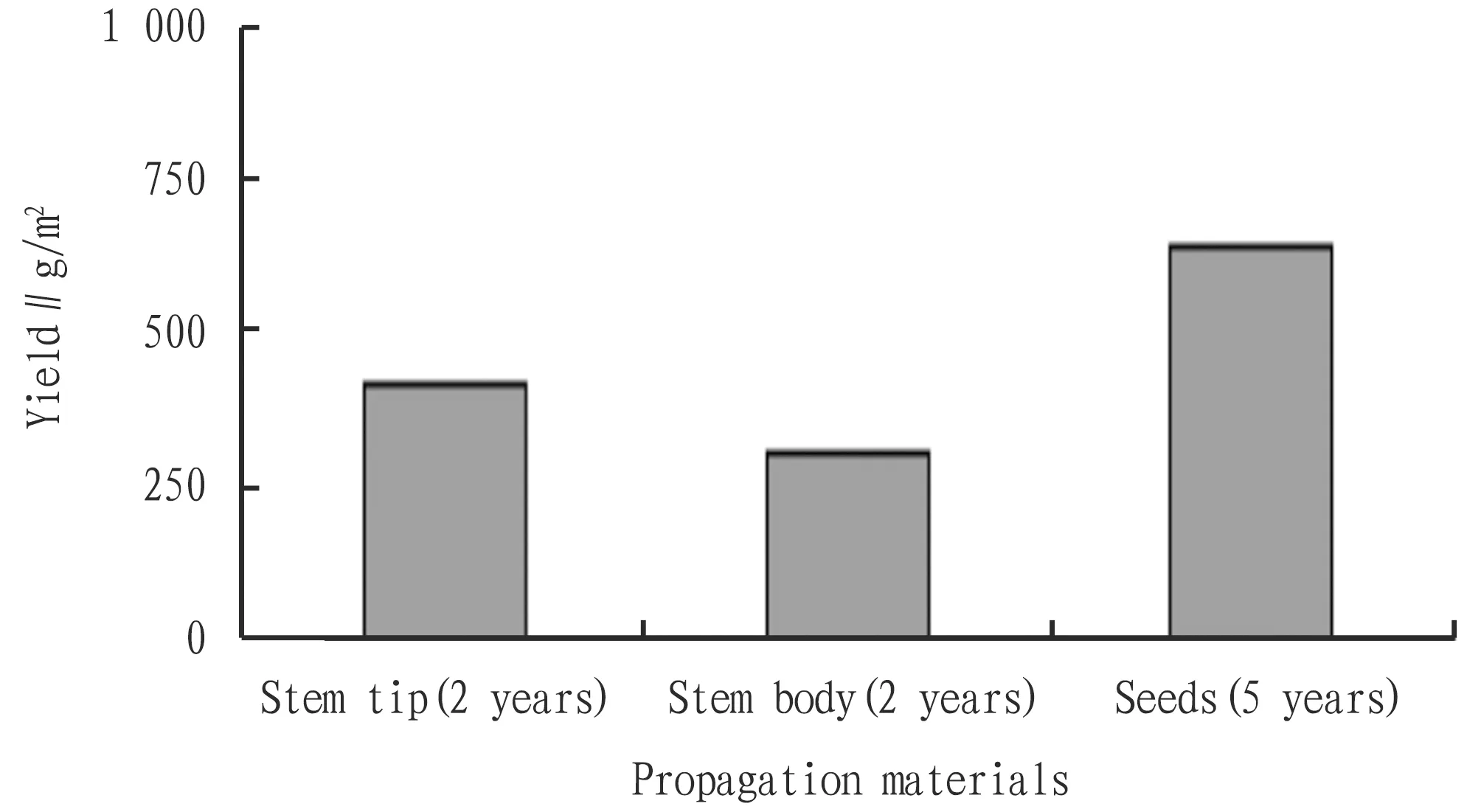
Fig.1 Relationship between different propagation materials and yield of Polygonatum odoratum

Table 1 The yield per unit area of Polygonatum odoratum using different propagation materials
The fresh weight of the main stem under stem tip propagation was 184.4% of that under stem body propagation and 250.9% of that under seed propagation, indicating that in the fifth year of propagation with seeds, the growth was still relatively slow. The reason for the small individual size ofP.odoratumrhizome used in this experiment under seed propagation was that after direct seeding, the original seedlings were not transplanted, and some were too dense, resulting in small space between individuals. The results of analysis of variance showed that there were significant differences in the growth ofP.odoratumexcept the stem length of the same year caused by different propagation materials. The analysis of variance is shown in Table 2.
Further multiple comparison showed that the yield per unit area ofP.odoratumpropagated with stem tip and stem body had no significant difference, but the difference between stem body and seeds was significant, but it was 5-year yield for seeds. There were significant differences in other unit indexes. See Table 3 for multiple comparisons. The above experimental results showed that when cultivatingP.odoratum, the stem tip should be used for propagation as far as possible, so that it not only had a high seedling emergence rate, but also had a high yield per unit area, and the harvest time could be 1-2 years ahead of schedule compared with the seed propagation. Secondly, when the stem tip cannot meet the needs for cultivation and supply of seeds, the stem can be used for propagation. In addition, seed propagation can also be used, and it can be transplanted and cultivated under seed propagation in the third year, which can not only rapidly expand the cultivation area, but also realize effective propagation.
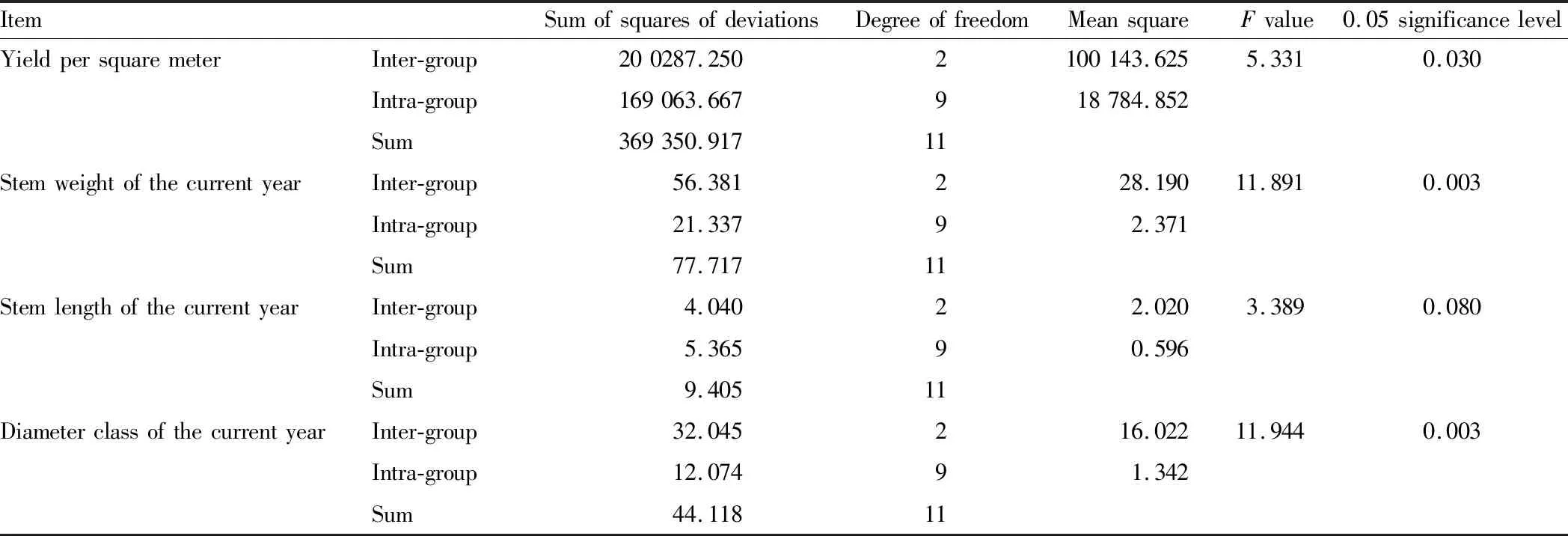
Table 2 Variance analysis of the effect of different propagation materials on yield of Polygonatum odoratum
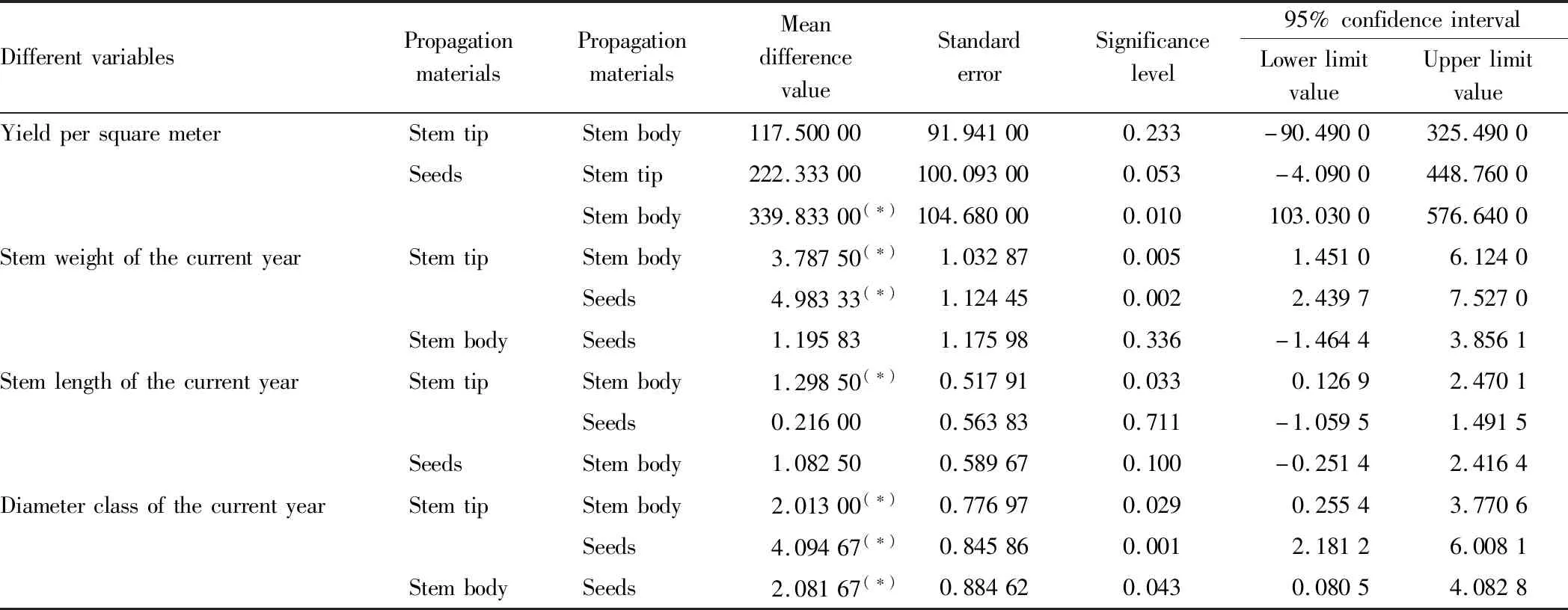
Table 3 Multiple comparisons of the effects of different propagation materials on yield of Polygonatum odoratum
4.2 Effects of different cultivation years on the yield ofP.odoratumAfter the cultivation ofP.odoratum, the number of harvest years is also a key problem to be solved in this study, so the appropriate harvest years were obtained by comparing the yields of different years. In order to determine the reasonable harvest years ofP.odoratum, experiments on cultivation in different years and yield investigation were carried out. The annual growth ofP.odoratum, that is, the yield ofP.odoratumeach year after cultivation was statistically analyzed. The yield per unit area and annual growth each year are shown in Table 4, Table 5 and Fig.2. As can be seen from Table 4, Table 5 and Fig.2, with the increase of cultivation years, the yield per unit area ofP.odoratumalso increased, but the rate of increase slowed down since the fourth year, and increased by 39.7% in the third year compared with the second year, and 24% in the fourth year compared with the third year. From Table 5 and Fig.2, the annual growth of underground stem showed that the stem length and stem weight decreased greatly, and the diameter class, that is, the thickness, did not change much. The stem weight in the fourth year was 23.9% lower than that in the third year, and the stem length decreased by 25.2%. In addition, from the analysis of variance of yield per unit area and growth per plant each year, there were significant differences, as shown in Table 6 and Table 7.

Table 4 The yield per unit area of Polygonatum odoratum in different cultivation years

Table 5 Continuous growth of Polygonatum odoratum under rhizome propagation

Fig.2 The yield per unit area and annual growth of Polygonatum odoratum in different cultivation years

Table 6 Variance analysis of yield per unit area of Polygonatum odoratum in different cultivation years

Table 7 Variance analysis of growth of Polygonatum odoratum in different cultivation years
It showed that there were significant differences in yield per unit area caused by different years. However, further multiple comparison showed that there was no significant difference in yield per unit area between the third year and the fourth year (Table 8). From Table 8, there was only a significant difference in yield between the second year and the fourth year. The difference of yield between the third year and the fourth year was small. With the increase of the number of years, the increase of yield was not obvious.

Table 8 Multiple comparison of yield per unit area of Polygonatum odoratum in different cultivation years
In addition, from the multiple comparative analysis of the annual growth of a single plant, except for the diameter class in the third year and the fourth year, there were significant differences in other indexes (Table 9). Therefore, theP.odoratumpropagated with rhizome was harvested in the third or fourth year after cultivation, and the third year was the best harvest time, when the average yield per unit area could reach 1 126 g.
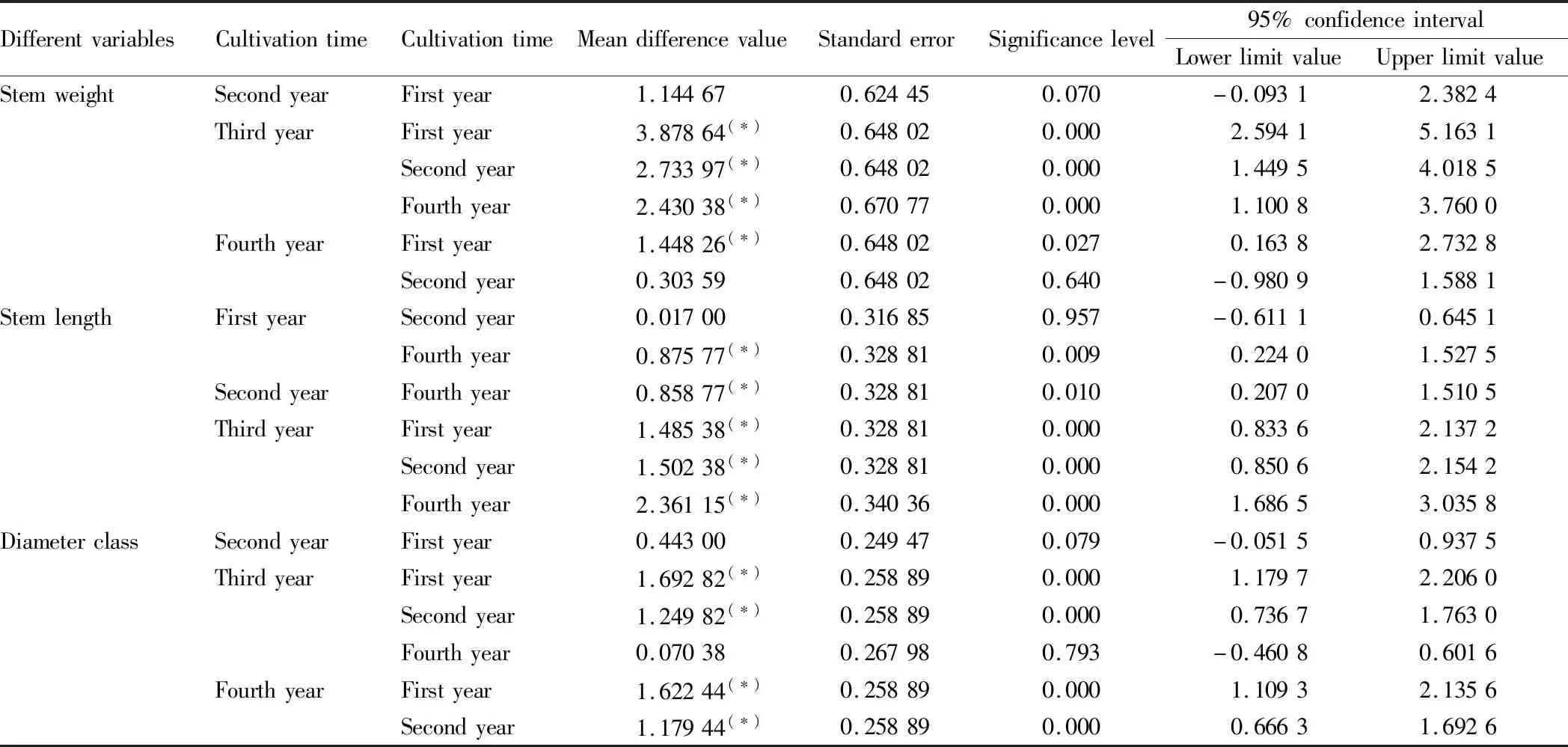
Table 9 Multiple comparisons of growth of Polygonatum odoratum in different cultivation years
5 Conclusion and discussion
(i) The experimental results on the effect of stem tip, stem body and seed as propagation materials on the yield ofP.odoratumshowed that whenP.odoratumwas cultivated, the stem tip should be used for propagation as much as possible, so that it not only had a high seedling emergence rate, but also had a high yield per unit area, and the harvest time could be 1-2 years earlier than that under seed propagation. Secondly, when the stem tip cannot meet the needs for cultivation and supply of seeds, the stem body can be used for propagation. In addition, seed propagation can also be used, and it can be transplanted and cultivated under seed propagation in the third year, which can not only rapidly expand the cultivation area, but also realize effective propagation.
(ii) Through the cultivation experiment and yield investigation in different years, the results showed that theP.odoratumpropagated with rhizome was harvested in the third or fourth year after cultivation, and the third year was the best harvest time.
杂志排行
Asian Agricultural Research的其它文章
- Impact of COVID-19 Epidemic on the International Food Supply Chain and Countermeasures of Shandong Province
- Study of Factors Influencing China-ASEAN Agricultural Product Trade Development in the Context of "the Belt and Road"
- Comprehensive Evaluation on the Level of Agricultural Economic Development in Hubei Province Based on Principal Component Analysis
- Effect of Foliar Application of Selenium Fertilizer on Yield, Selenium Content and Heavy Metal Contents of Waxy Maize
- Effects of Applying Trace Clements on Yield and Quality of Flue-cured Tobacco Cuibi-1
- Analysis of the Correlation between Middle-season Rice Yield and Meteorological Factors in Jingdong County from 2009 to 2016
